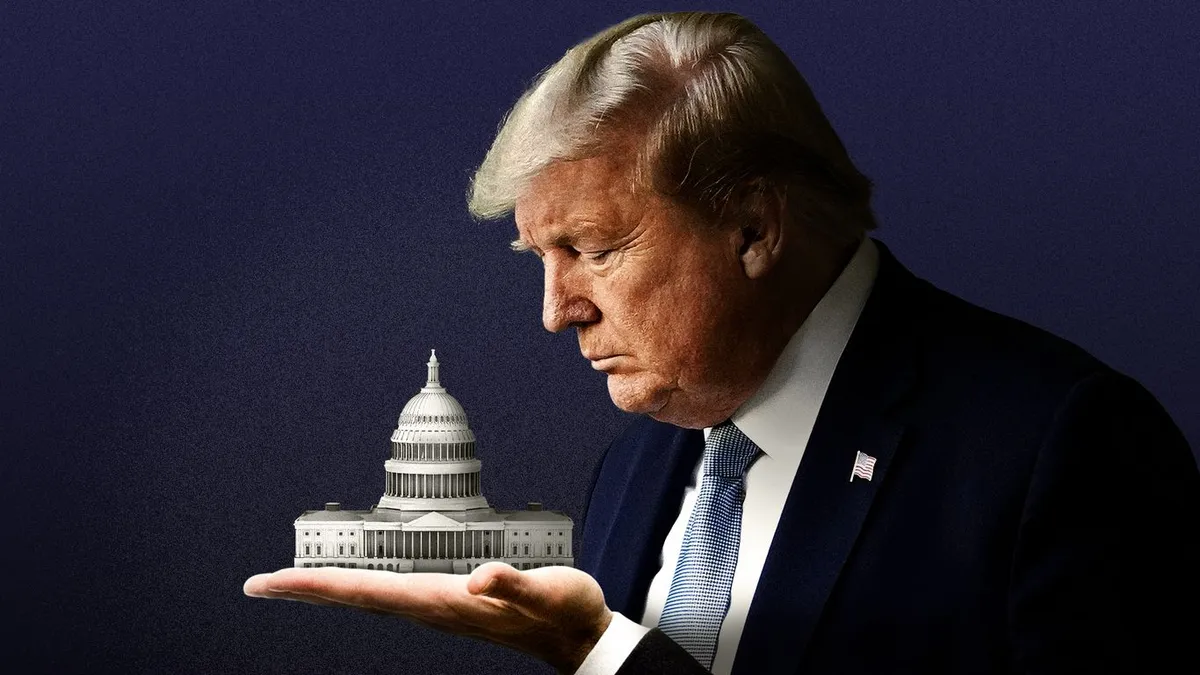
Former President Donald Trump is once again pushing for significant changes within the Republican Party, as he recently urged senators to adopt the nuclear option to end the filibuster in order to reopen the government. This call to action represents a potential shift in presidential norms that has lawmakers concerned about the long-term implications of such a move.
Overhauling Senate precedent, particularly something as impactful as ending the filibuster, can benefit the ruling party in the short term. However, it poses a serious risk for Republicans if the Democrats regain control of the Senate in the future. Currently, the filibuster requires 60 votes to move most legislation forward, but eliminating it would allow for a simple majority to pass bills. This would enable Republicans, who hold 53 seats, to advance their priorities without needing any Democratic support.
In a recent post on Truth Social, Trump expressed his frustration with the Democrats, stating, “Because of the fact that the Democrats have gone stone cold 'crazy,' the choice is clear — initiate the 'nuclear option,' get rid of the filibuster and make America great again!” This is not the first time Trump has advocated for ending the filibuster; he has been vocal about it since his first term in office, despite previous resistance from Republican leaders like former Senate Majority Leader Mitch McConnell.
So, how could the filibuster be eliminated? The rule is not legally mandated, so senators have a couple of pathways to drop it. The formal approach would be to amend Senate Rule 22, which specifies the 60-vote requirement for most legislation. However, this would require a two-thirds majority, making it a challenging route. Alternatively, the nuclear option could be invoked, allowing a simple majority of senators to create a new interpretation of Senate rules without a formal change.
There is also the possibility for Republicans to bypass the filibuster entirely using the reconciliation process for certain budget-related bills. The Senate parliamentarian would guide the GOP on whether their reconciliation bill aligns with the Byrd Rule, but Vice President JD Vance, in his role as Senate President, may opt to ignore the parliamentarian’s advice, expediting the passage of legislation.
Despite Trump's urging, most Senate Republicans, including leadership, have dismissed the idea of ending the filibuster. Senate Majority Leader John Thune has emphasized that the filibuster plays a vital role in fostering discussion and compromise, ensuring that minority party voices are heard in Congress. Thune argues that preserving the filibuster is essential for maintaining the Senate’s checks-and-balances function within the government.
It seems unlikely that Senate Republicans will cave to pressure and eliminate the filibuster anytime soon. Many recognize the potential consequences, such as a future Democratic majority pushing through significant legislation, like granting statehood to D.C. or enacting expansive voting rights laws. During a previous attempt to end the filibuster to codify abortion rights after the overturning of Roe v. Wade, Senators Joe Manchin and Kyrsten Sinema stood firm against party leadership, keeping the filibuster in place.
While the filibuster appears to remain intact for the foreseeable future, Trump's influence on the Republican Party cannot be underestimated. As the impact of the ongoing government shutdown unfolds, the debate surrounding the filibuster may not be over. Trump's ability to rally his party around his demands could reignite the conversation about this critical Senate rule.
For more insights into the implications of altering the filibuster, consider reading about President Biden’s support for changes to codify Roe v. Wade and how such actions could reshape legislative dynamics in the Senate.